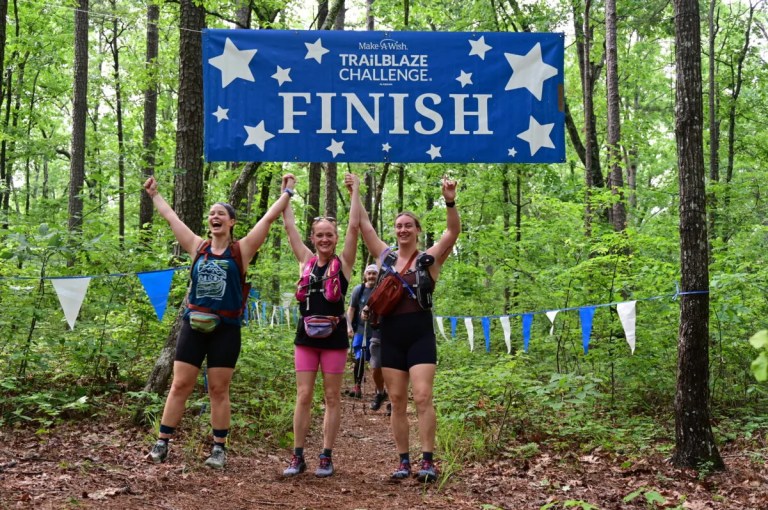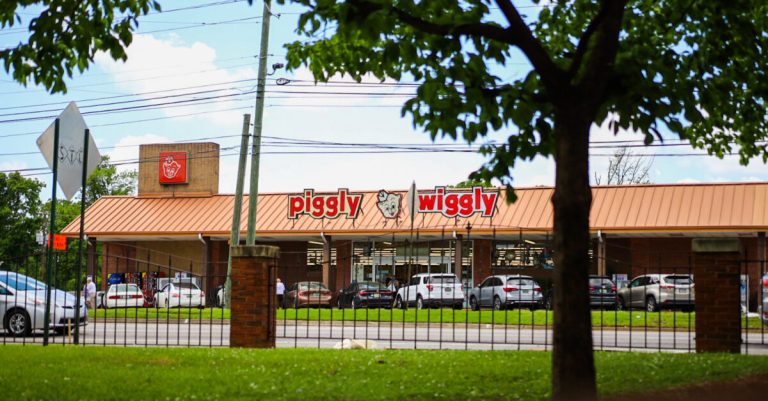A little boy blowing a kiss will convince you to become a United Ability champion
Reading time: 7 minutes
Sponsored

Croft Aycock, a one-and-a-half-year-old boy, blew me a kiss across the living room. Right then and there, he captured my heart…and he will capture yours too.
This month, Croft, his parents Elizabeth and Matt Aycock and his older brother Matthew are spokespeople for the annual United Ability Champions Campaign to raise funds to provide scholarships for children with disabilities to attend their inclusive Hand In Hand Early Learning Program.
Recently, I sat down with the Aycocks in their Irondale home for a brief interview about their role in the campaign. I listened to the family’s message of courage, hope, joy and unrelenting love and learned how United Ability impacts their lives. And, in a moment I will never forget, I was given a gift by a brave and beautiful little boy—a blown kiss.
Here is the story.
Busy Boys

Matt Aycock greeted me in the front yard and led me inside his family’s home. It was 8 AM. Since I have a teenage daughter, I guess I expected to see two sleepy, possibly just-awakened little boys. Instead, I found two busy boys playing in the living room, totally focused on having fun. The eldest child, Matthew, was trying out every toy. And following right behind him like—little brothers do—was Croft.
Pointing at Croft, Matt said, “We call him Bam-Bam!” Right on cue, Croft started harmlessly slamming a toy on the side of a table.
In the midst of the joyful chaos, I met Elizabeth, and knowing we didn’t have much time, both parents gathered up the boys and we took some family photos. Once that was done, Matthew went off to play in his room while I interviewed Croft and his parents.
Because of COVID protocols, I made sure to keep a 6-10 foot distance from the family. It wasn’t until we sat down quietly, with Croft walking around the table to my end of the sofa, did I first truly realize he has a disability.
Their Story

Once we settled in, Elizabeth recounted her family’s journey beginning on the day Croft was born.
“We found out on the day he was born that something was different,” she said. “There was no indication during pregnancy. When he was born, they had the NICU team on call because they had concerns he might have a swallowing issue.”
Matt recalled that once Croft was born, they took him to a nearby table where he asked the nurses, “Where are his ears?” The nurses told him not to alarm Elizabeth, that he was okay but there were a few issues.
According to the Aycocks, their doctor immediately diagnosed Croft with Treacher-Collins Syndrome. He reassured them that while he was going to have some facial abnormalities, he would be cognitively 100% normal.
“Like any type A person, I touched him as much as they would let me and got to googling,” said Elizabeth. “He has a craniofacial condition. His skull and all of the components of the bone structure did not completely form before birth. He had a deeply recessed jaw, no cheekbones or openings for his ears. Due to his recessed jaw, he has airway issues.”
When Matt first held Croft, he stopped breathing. Fortunately, a respiratory therapist saw him and quickly resolved the problem. During his first months, Croft was on oxygen and solely fed by a g-tube.
Over the past year, he has endured surgeries to adjust his jaw, give him cheekbones and reconstruct his ears—all while learning how to eat and drink.
Discovering Hand In Hand

From the beginning, the Aycocks discovered daycare options that could meet Croft’s needs were very few and far between. Fortunately, Elizabeth’s sister worked at United Ability’s Hand In Hand Early Learning Center and had good friends whose children had attended.
Croft was placed on a waiting list, but was soon accepted on a part-time basis to the program.
“From day one, Croft has received all the therapies,” added Elizabeth. “They work with us on a development plan and are constantly re-evaluating. I can’t say enough about what United Ability has done for us, both in helping us navigate his needs and learning how to help him.”
Croft’s two biggest obstacles are hearing correlating to speech development and eating/drinking liquids. Because of his oral structure, doctors initially thought he’d be unable to eat. While he is still unable to fully drink, he can eat baby food.
“The teachers are heavily invested in his development as well as his therapists,” said Matt. “It’s a huge collaborative effort all centered around trying to get him to succeed and thrive. It is so rewarding. He has really come a tremendous way. A year ago he wouldn’t let you put anything in his mouth. Now he wants to get any and everything he can get his hands on.”
Starting this past July, Croft’s brother Matthew joined him at Hand In Hand.
Elizabeth was thrilled when this happened. “It is great for him. They are together. Matthew is at a school that normalizes children of all kinds. To him, it is all second nature. He has never looked at his brother as different or like he has anything wrong with him. He doesn’t do that with other children either.”
Because of their deep involvement with Hand In Hand, the Aycocks are excited to go public and promote the program throughout the month of December as part of the Champions Campaign. To date, they have appeared on several morning local television shows including Fox 6.
About the Hand In Hand Early Learning Program

Kim Braasch has been the director of the United Ability Hand In Hand Early Learning Program for 25 years.
“When we first started out serving children with disabilities, we allowed siblings and employees’ kids to come,” described Braasch. “It was amazing to witness the benefits of them learning side by side. To see a child in a wheelchair is the norm for our kids. They learn acceptance at an early age and to care for one another—that’s what sets us apart.”
Today, the program serves 140 part-time and full-time children from six weeks to five years old. In total, 35-40% of the program’s children have special needs, while the rest are typical children.
More than a classroom, the program offers additional resources including:
- Occupational Therapy
- Physical Therapy
- Medical Assistants
- Speech-Language Therapy
“Everything we do is a team effort. Families are a big part of that team. We see miracles happen every day. We celebrate the little things here. It could be the child’s first step. A child communicating on a communication device. Right now, Croft is cruising. He will be walking independently very soon. He is a happy, determined little boy. He just lights up when you see him,” Braasch concluded.
Blowing a Kiss

Now, back to that blown kiss. Minutes before I left the Aycock family home while sitting in Matt and Elizabeth’s lap, Croft stared at me for a full 15-20 seconds. I smiled back while talking to his mom and dad.
Suddenly, without prompting from his parents, he put his hand to his mouth and blew me a kiss. It landed. And I caught it.
I can think of no better reason why people should join the United Ability Champions Campaign. Yes, the $1 to $1 match is nice, but a loving kiss from Croft and all the children and families at Hand In Hand is priceless.
Support the United Ability Champions Campaign today.
Sponsored by:

 14112 views
14112 views


